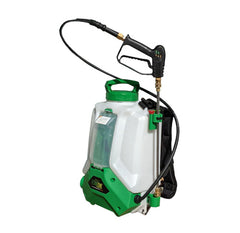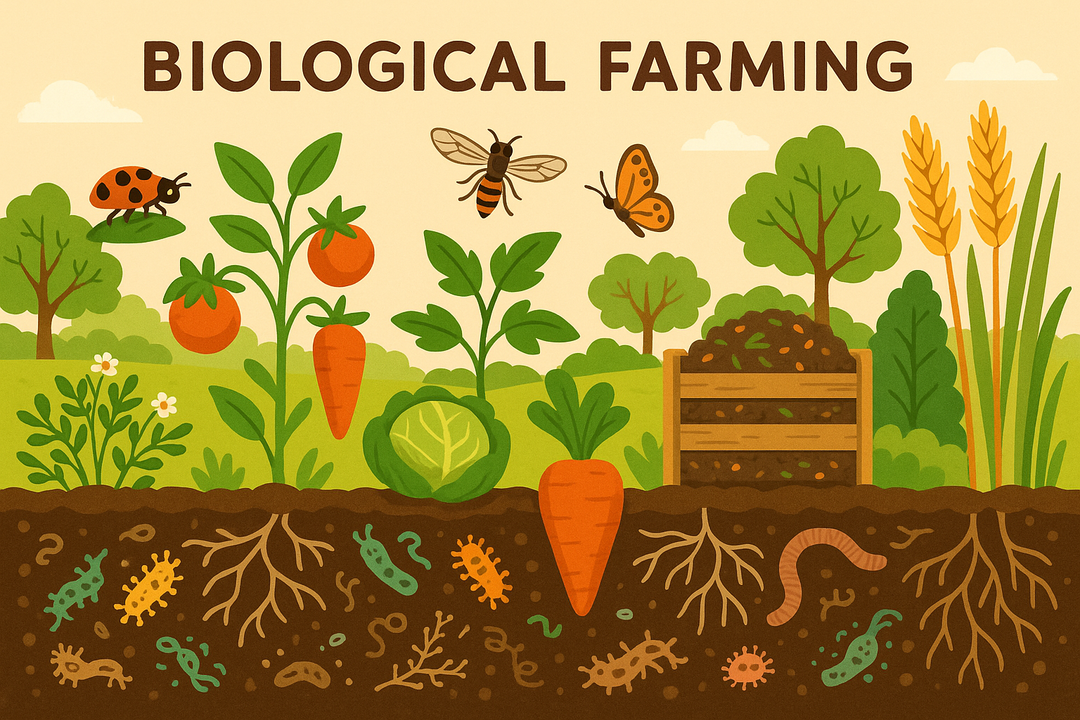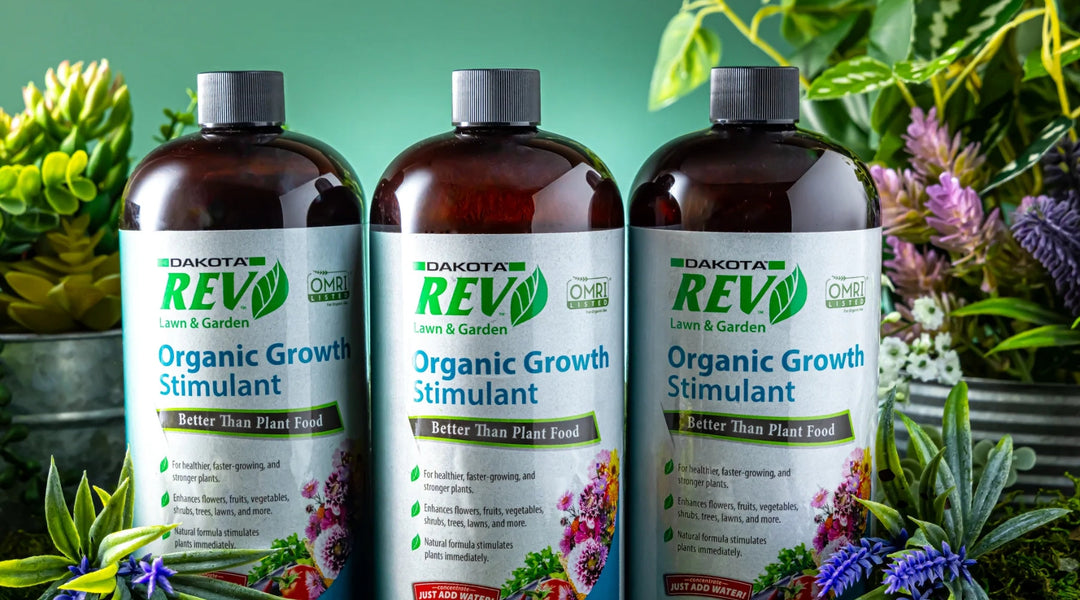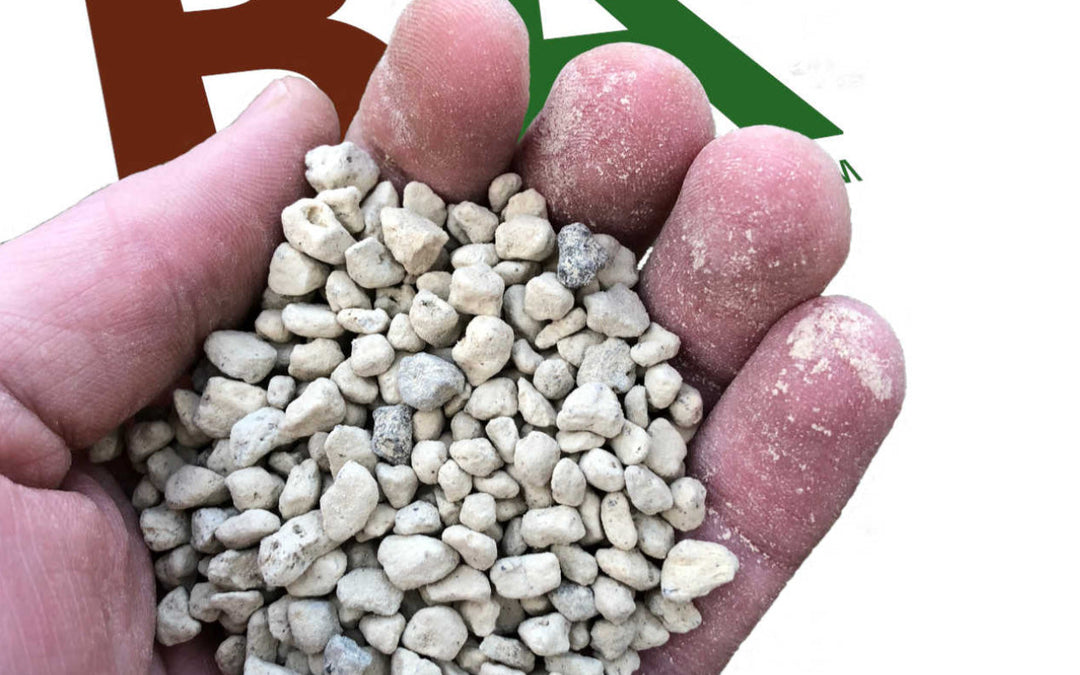How to Choose a Lawn Fertilizer
For many people, growing a healthy, green, and lush lawn is one of the key benchmarks of success in their neighborhood. However, a Gallup Gardening Survey showed that less than 50 percent of people use lawn fertilizer. Although you may think you have a beautiful yard, adding organic fertilizer to your lawn and garden can provide bigger flowers, greener grass, and more produce.
Types of Lawn Fertilizer
There are a few different types of lawn fertilizer, but the first decision you should make is between synthetic and organic fertilizers. Each type has pros and cons, so you should understand the difference before moving on.
What is Organic Fertilizer?
Organic fertilizer is a substance designed to supplement plant health and growth by using natural materials such as decomposed leaves, fish, animal manure, broken shells, and food compost. These ingredients contain carbon and offer a more controlled distribution of nutrients by ensuring a gradual distribution.
Chemical or synthetic fertilizer is made from rock fragments and natural or nitrogen gas. Examples include ammonium phosphate, ammonium nitrate, and potassium sulfate. Synthetic fertilizers deliver their nutrients all at once, and if you're not careful, these fertilizers can cause burns or other damage to your plants and lawn.
Using organic fertilizer creates resilient, lush yards that are the envy of neighbors. Although buying organic fertilizer can seem expensive at first, you'll likely save money in the long run because you'll build up a lawn that is healthier and able to ward off pests and diseases easier than one that requires more frequent fertilizing and upkeep.
Pros of Organic Fertilizer
- Encourages natural bacteria, microorganisms, and fungi, which attract worms
- Attracts helpful insects such as ladybugs, dragonflies, and spiders that eat problem bugs
- Improves the efficiency of the soil in absorbing and distributing water
- Supplies nutrients slowly for extended support
- Reduces the need for additional lawn fertilizer in the long run
- Won't burn plants and growth like many synthetic versions
What is Synthetic Fertilizer?
Synthetic fertilizer, also known as commercial or non-organic fertilizer, is manufactured using chemicals and other mineral deposits. These fertilizers typically focus on a handful of nutrients, such as potassium, nitrogen, sulfur, and phosphorus, and may also include micronutrients in small quantities. Unlike organic fertilizer, which uses a slow-release method to support your lawn and garden, inorganic or synthetic lawn fertilizer makes its nutrients available immediately.
Although synthetic fertilizer means that you can begin to see results faster than you would with organic fertilizer, this more-instant gratification can come at a price. Synthetic fertilizer is more likely to give chemical burns to plants if it is overused. You also have to utilize synthetic fertilizer more frequently because it doesn't leave any nutrients in the soil.
When using synthetic fertilizer, you're not adding anything substantial to the health of the soil. So, while you're saving money in the short term, you will need to supply lawn fertilizer throughout the life of the grass or garden, which can end up costing more than if you used an organic fertilizer that continues to improve the health of the soil over time.
Liquid vs. Granule Fertilizer
Once you've decided between synthetic or organic fertilizer, the next step is to determine whether you want to use liquid fertilizer or granule fertilizer. Both types of lawn fertilizer have their benefits, so it's essential to research each one and compare that with your lawn care needs before making a selection.
Ease of Use for Fertilizer
Liquid fertilizer comes in multiple styles, including spray bottles, concentrated bottles, and versions that hook directly to your hose. A hose sprayer for liquid fertilizer is one of the easiest ways to spread nutrients without worrying about mixing the right concentration of product with water. This is a great option if you have access to a hose that will reach the entire area you wish to fertilize.
Liquid fertilizer in spray bottles comes pre-mixed and is ready to be applied wherever needed. This application should be reserved for small areas such as a garden or planter containers or to spot treat areas in your grass. For larger applications of lawn fertilizer, you can purchase liquid fertilizer in concentrated bottles. Concentrated liquid fertilizer can be mixed into backpack sprayers or other tank applications and used over large areas.
Applying a granule fertilizer requires a spreader. Organic fertilizer spreaders come in four different styles.
Fertilizer Spreader Options
- Drop spreader
- Broadcast spreader
- Tow-behind spreader
- Handheld spreader
With a drop spreader, the organic fertilizer drops directly from the spreader onto your lawn. Distribution is controlled with a trigger on the handle that connects to a mechanism on the bin.
A broadcast spreader is a set-up similar to a drop spreader. However, it boasts the addition of a spreader wheel that distributes granule fertilizer over a wider area. The spreader allows for even and consistent fertilizing, and many can be used to distribute ice melt products during the winter, giving users a bit more bang for their buck. These styles should also come with options for adjusting the distance and amount of granule fertilizer that is spread.
A tow-behind spreader is good for larger agricultural areas such as farms and fields. You can hook up this type of lawn fertilizer spreader to a tractor or other vehicle and let that do the work for you. Like the other spreaders, you can also use this style to distribute seeds or eco-friendly ice melt.
A handheld spreader is a good option for general maintenance and upkeep of your yard or smaller areas. Look for something lightweight that includes multiple options for customizing your spreading. However, these spreaders aren't typically useful for winter operations like ice melt products due to their smaller size.
Fertilizer Efficiency and Absorption Rate
When choosing between granule and liquid lawn fertilizer, determine how quickly you need the supplementation to occur. For example, if you are trying to boost the look of your lawn for a weekend garden party a few days away, you will probably opt for a liquid fertilizer because it provides nutrients faster.
If you want something that you can spread and forget for a while, granule fertilizers are a great choice because the slow-release style supplements the nutrients in the soil for an extended period of time rather than instantly.
It's important to note that there are some styles that mix the liquid and granule fertilizers. Each granule is coated with a liquid organic fertilizer that provides immediate nutrients, while the granules break down slower for extended-release fertilizer.
Nutrient Consistency of Fertilizer
Another difference between liquid and granule lawn fertilizers is the nutrient consistency. With liquid lawn fertilizer, the substance is mixed so that every drop contains the same nutrients. With granules, each piece is a little bit different. So, whether it's the nutrient makeup or the nutrient levels, there is less consistency in granule fertilizer than there is in liquid styles.
Is Liquid or Granule Fertilizer More Expensive?
When you compare granule to liquid organic fertilizer, the cost difference is slight. Although different concentrations and product sizes impact the overall cost, liquid fertilizer tends to be slightly more expensive than granule lawn fertilizer.
When Should You Fertilize Your Lawn?
There isn't a one-size-fits-all answer to when you should fertilize your lawn. The schedule for your lawn care maintenance plan will depend on the following:
- Climate
- Type of grass
- Type of lawn fertilizer
- Type of soil
- How often you need to apply the fertilizer
There are several opinions about organic fertilizer schedules and when your lawn will absorb the most nutrients. Suppose you have warm-season grasses such as Bermuda, Zoysia, and Centipede. In that case, you'll likely want to apply lawn fertilizer in early summer with a second application before Labor Day before your grass enters dormancy for the winter.
You'll want to fertilize for cool-season grasses like tall fescue, Kentucky bluegrass, and perennial ryegrass in the fall. However, if your grass appears to be in need, you can also add lawn fertilizer in the early spring.
As a rule of thumb, you usually can't go wrong fertilizing your lawn around Labor Day. Fall is when grass develops strong roots, so adding lawn fertilizer helps promote growth and adds stability. However, avoid fertilizing in late September or early October if your area's climate is colder.
As the temperature drops, grass begins to harden in preparation for winter. If you fertilize your lawn too late in the season, you could prevent the grass from putting up its defense before winter, which will end up damaging your lawn when it's exposed to cold.
Should You Use Weed and Feed?
Treatments such as weed-and-feed style fertilizers aren't recommended in these climates because the best time to fertilize your lawn isn't the best time to kill weeds. Using a weed killer in late September is likely to be the most efficient, while the best time to add a lawn fertilizer is earlier in the year.
When it comes to the time of day, experts recommend fertilizing your lawn early in the morning on a cool day. If the temperature is going to be too hot later in the day, wait and apply fertilizer when the temperature returns to normal. Also, avoid spreading your fertilizer when you're supposed to receive a lot of rain – the water will wash away the nutrients before they can be absorbed by your lawn.
Soil Testing for Lawn Fertilizer
One of the most critical steps to consider before selecting a specific fertilizer is the nutrient makeup of your soil. Performing soil testing is an intelligent way to determine what nutrients your soil lacks so you can make the correct additions. Keep your eye out for our new soil testing additions coming soon. Our Rocky Mountain BioAg® soil test kit and recommendations will be available soon. For microbial testing and fungal testing consider using our soil microbiometer!
Lawn Fertilizers are Made Up of 3 Main Ingredients:
- Nitrogen (N)
- Phosphorus (P)
- Potassium (K)
Nitrogen is responsible for fast and dense growth, including boosting leaf development for a lush-looking lawn. This nutrient also supports protein synthesis. Phosphorus helps promote seed development and plant maturity and supports root growth. Potassium protects against disease and helps grass fight against damage caused by drought.
What Do Numbers Mean on Fertilizer?
Unfortunately, trying to understand bags of organic fertilizer isn't always the easiest. However, there are a few things that you can remember that will make life easier. The first is that the three numbers are always listed in this order: nitrogen, phosphorus, and then potassium.
When you see the numbers on bags of fertilizer, it represents the weight of each nutrient by percentage. There is a label that is nationally standardized, so you'll always be able to know what nutrients are in each bag as long as you can remember the order.
For example, a 50-pound bag of fertilizer with the label 5-10-10 contains five percent of nitrogen and 10 percent of phosphorus and potassium. To calculate the nutrient content of this bag, multiply the total weight – 50 pounds – by .05, which is five percent, for nitrogen, and then .10, which is 10 percent, for phosphorus and potassium. If you had a 50-pound bag of 6-6-18, you would multiply 50 by .06 to determine the amount of nitrogen and phosphorus and then multiply 50 pounds by .18 to calculate the amount of potassium. The remaining weight is typically sand or another filler.
In addition to blends, you can purchase fertilizer in singular concentrations of each nutrient. If you are conducting the recommended soil tests, you should be able to pinpoint nutrient deficiencies, if any exist. Once you've supplemented your lawn with organic fertilizer, doing follow-up Rocky Mountain BioAg® tests a few times a year to ensure that the nutrients are still balanced will help ensure consistent growth.
Where to Buy Lawn Fertilizer
Especially when purchasing organic fertilizer, you want to ensure quality and consistency to get the best results. Buying your fertilizer from a reputable supplier that has done the research and has scientific evidence behind its products will ensure that you're not only getting the most bang for your buck but also that you're getting the results you expect.
Rocky Mountain BioAg® offers natural and organic products backed by science and more than a decade of research, so you can feel confident in the support you're providing for your yard. From help with controlling tomato rot to the products you need to keep ice at bay during the winter, you’ll always find what you need from Rocky Mountain BioAg®.















Leave a comment